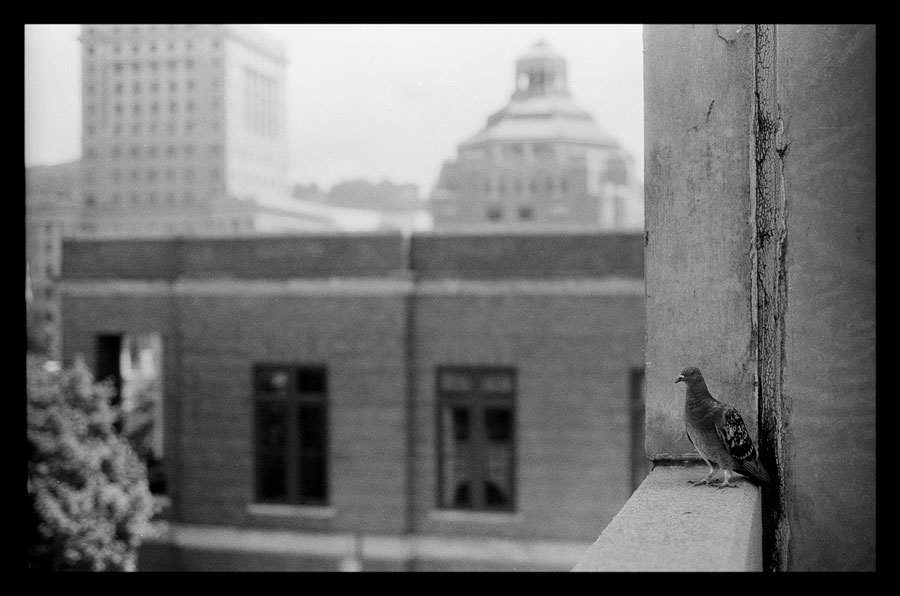
With the “Argus” on the cover of the Xpress recently, I wanted to take a moment to talk about how all this intrepid journalism comes together. There are four qualities a good street photographer needs:
1. Dumb luck
2. Unemployment
3. Obsessive-compulsive disorder
4. A camera
Coincidentally, three of those qualities are also possessed by most of Asheville’s crazy street people. Kind of makes you wonder.
Anyway, I’ve been shooting pictures downtown for a good long time, and I have thousands of images (see quality #3). The vast majority of them were taken before the Argus began, and they form a loose prologue. Last week’s post about Zelda and Seymour, the falcons-turned-street-attractions brought to mind a story from that prologue era that says a lot about what the “Argus” is.
One day I found myself downtown testing film for my photography blog (see quality #2). It was summer, and the town was broiling with heat and light. The film I was testing was particularly sensitive to bright, high-contrast lighting conditions, so I was looking for scenes that would push its limits. Naturally, I went straight to the dilapidated parking garage on Haywood.

The ceiling of the garage was covered in netting. I can only assume this was to prevent birds from nesting, because the space was alive with the sound of them, their wings flapping and their urgent chirping voices. I took a few shots of the light coming in the windows before I realized that one of those voices was louder than the others.
It was coming from behind me, up in the corner. Among all the dead leaves and debris in the net was a small bird, a sparrow maybe, caught. For some reason of its own, it had pushed its head and one wing through the net, and now it was stuck.
As I approached its chirping became even more frantic. It struggled against the net. The ceiling was well out of my reach. There was nothing I could do for it. I decided to take a picture and go.
But that decision didn’t sit well. Now, I’m not a vegetarian. I kill animals all the time with my grocery dollars and restaurant bills, and I park in parking garages, and I understand why that netting was there. But for some reason I didn’t want to leave this bird to die.
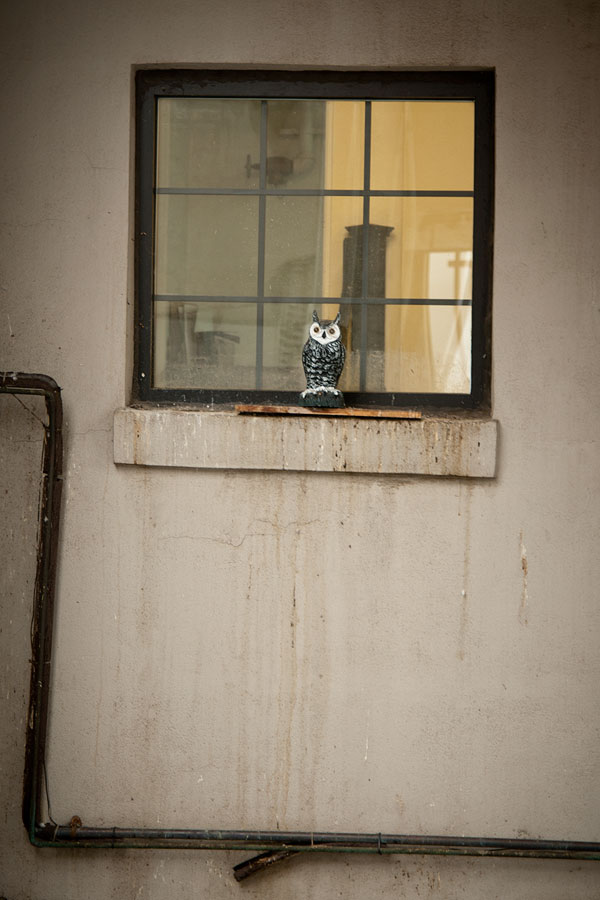
There was a chair in the parking garage. At first I assumed it was for the attendant, but it was so old and rotten it couldn’t have been in regular use. It creaked under my weight, and still I couldn’t reach the bird.
In my head, I counted the years since my last tetanus booster, and then jumped from the chair up onto the sill of the broken window beneath the bird. I held on to the exposed studs in the wall. If I stretched as far as I could and completely overbalanced, I could just reach the bird.
It immediately attacked me, pulling to the limit of the net to try to slice up my hand with its beak. I jerked away, nearly fell, and then reached back with my pocketknife and began cutting the net around the bird, just out of its reach. Dust and grit fell into my eyes. I pictured an APD officer showing up right about now and charging me with destruction of property.
After long minutes of careful cutting, I accomplished pretty much nothing. Instead of simply being caught in the net, the bird was now hanging from a strand of it as if in a noose. It was still trying to defend itself, and several times came close to tearing into my wrist as it swung back and forth. My tenuous hold on the wall and the windowsill was about to give out, and I was drenched in sweat. I took a final swipe with my knife and cut the last of the net. The bird fell past me and hit the ground like a piece of soft, rotten wood.
It lay there, completely still, with a ragged circle of net around its neck like some grim Elizabethan collar. I dropped from the windowsill and bent down in the dirt to look at it, sure that I had killed it. After a few seconds, it blinked.
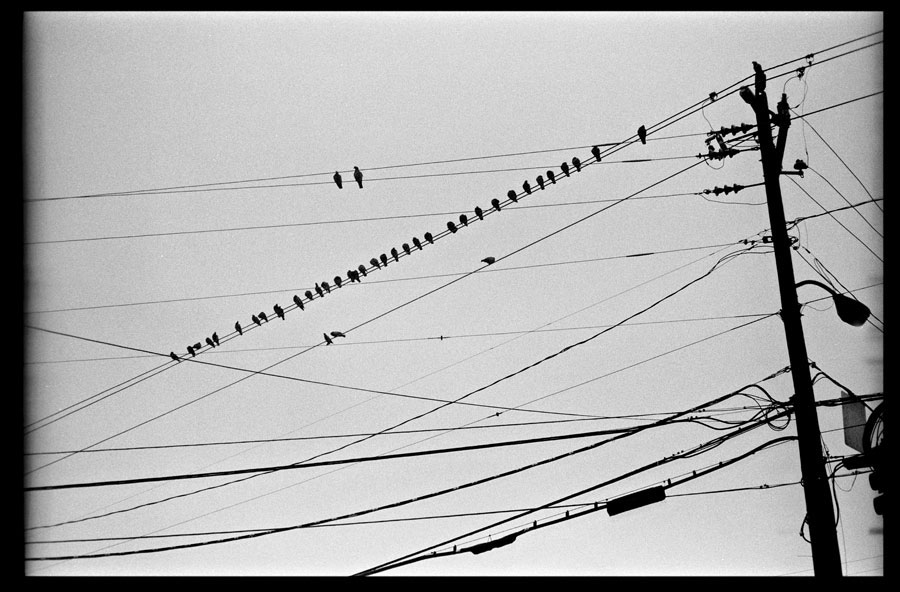
The humane thing to do would be to crush it with my heel. How could it live after this? But I had come this far. I reached out with the knife, and the bird immediately came to life, surging forward with its one free wing and biting at my hand.
I stood up and looked down at myself. I was covered in rust, dirt and sweat. No problem; this was Asheville. I walked out onto Haywood with enough composure to put my knife away. Went to Tru Blue, bought some scissors.
The bird was still where I left it, and it had mustered enough energy to scream at me when I returned. I knelt next to it and very slowly reached out with the scissors. It bobbed its head to peck at them. I pushed the tips of the blades in as close as I could and snipped a strand of the net. The bird went quiet, perhaps realizing that I was trying to help it, or more likely resigning itself to whatever understanding it had of fate.
I kept cutting. The bird lay there and blinked at me. Then, suddenly, it righted itself. There was still a square of net around its neck, but when I reached out to cut more, it shrieked at me and hopped away. I pursued it. It went as far as it could into the corner. When I approached, it turned its head away, pressing its face into the dirty brick.
I had done what I could. The bird would surely die, but it was no longer caught. I brought out the camera (see quality #4) and took a picture.
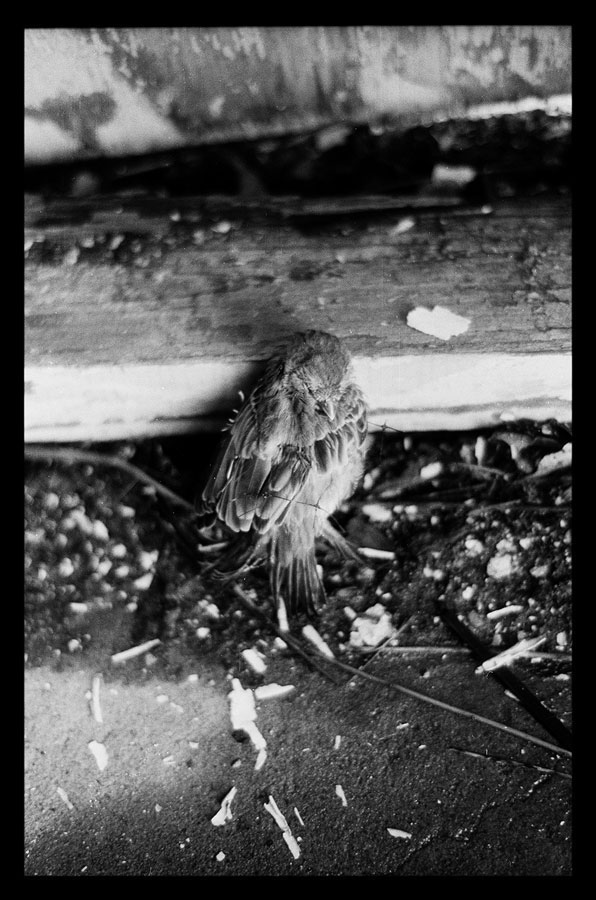
I stood up and looked around. The other birds were still chirping as if nothing had happened. For the first time since climbing on the chair I took in my surroundings.
I’d thought before that the net was littered with dead leaves. Now I realized that the brown shapes that hung there were dry, desiccated birds. Some of them had been reduced to skeletons.
To any outlet but the Argus, none of this is news. There aren’t even any people in this story, and there was no way to tell if it held meaning or if it was all just a chance occurrence (see quality #1). But my experience with that bird carried more weight than any headline I read that day.
At the same time, even this experience is victim to the myopia of the press: As time moves on, so do we. Other voices talk louder. Other stories make the front page.
But I haven’t gone back to the Haywood Street garage.
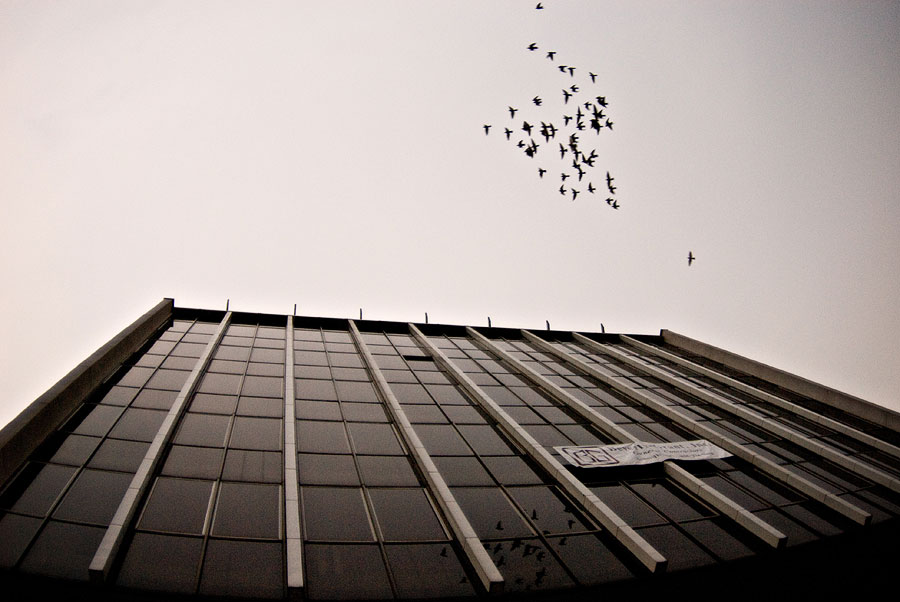
Follow on Twitter: @AVLArgus
Other dispatches from the Asheville Argus:
Introducing the Asheville Argus



A very touching read, and exquisite photos accompanying it. Thank you!
Max,FYI:
We have a very tall ladder at True Blue and you could have borrowed some scissors.